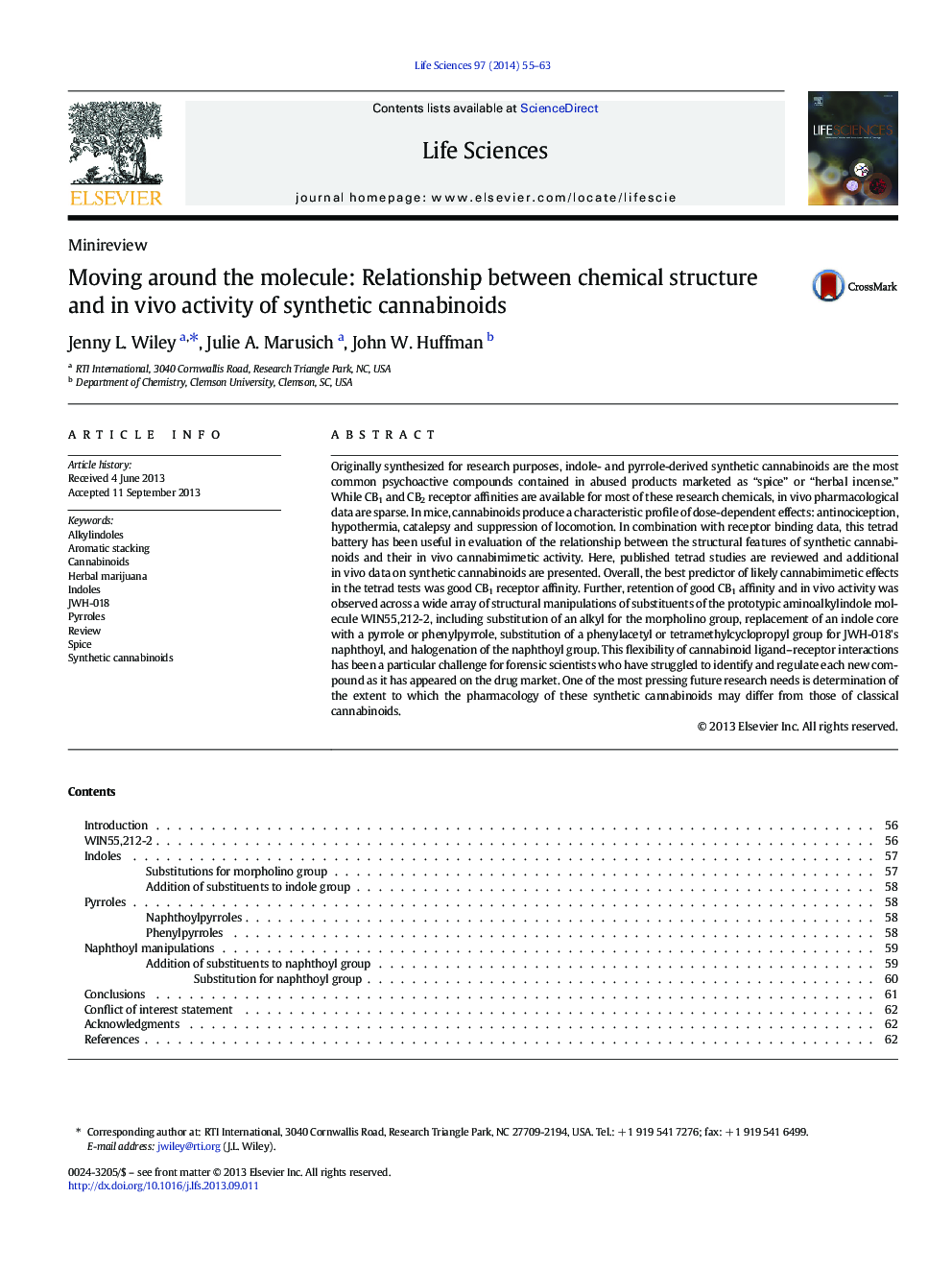| کد مقاله | کد نشریه | سال انتشار | مقاله انگلیسی | نسخه تمام متن |
|---|---|---|---|---|
| 2551322 | 1124716 | 2014 | 9 صفحه PDF | دانلود رایگان |

Originally synthesized for research purposes, indole- and pyrrole-derived synthetic cannabinoids are the most common psychoactive compounds contained in abused products marketed as “spice” or “herbal incense.” While CB1 and CB2 receptor affinities are available for most of these research chemicals, in vivo pharmacological data are sparse. In mice, cannabinoids produce a characteristic profile of dose-dependent effects: antinociception, hypothermia, catalepsy and suppression of locomotion. In combination with receptor binding data, this tetrad battery has been useful in evaluation of the relationship between the structural features of synthetic cannabinoids and their in vivo cannabimimetic activity. Here, published tetrad studies are reviewed and additional in vivo data on synthetic cannabinoids are presented. Overall, the best predictor of likely cannabimimetic effects in the tetrad tests was good CB1 receptor affinity. Further, retention of good CB1 affinity and in vivo activity was observed across a wide array of structural manipulations of substituents of the prototypic aminoalkylindole molecule WIN55,212-2, including substitution of an alkyl for the morpholino group, replacement of an indole core with a pyrrole or phenylpyrrole, substitution of a phenylacetyl or tetramethylcyclopropyl group for JWH-018's naphthoyl, and halogenation of the naphthoyl group. This flexibility of cannabinoid ligand–receptor interactions has been a particular challenge for forensic scientists who have struggled to identify and regulate each new compound as it has appeared on the drug market. One of the most pressing future research needs is determination of the extent to which the pharmacology of these synthetic cannabinoids may differ from those of classical cannabinoids.
Figure optionsDownload high-quality image (191 K)Download as PowerPoint slide
Journal: Life Sciences - Volume 97, Issue 1, 27 February 2014, Pages 55–63